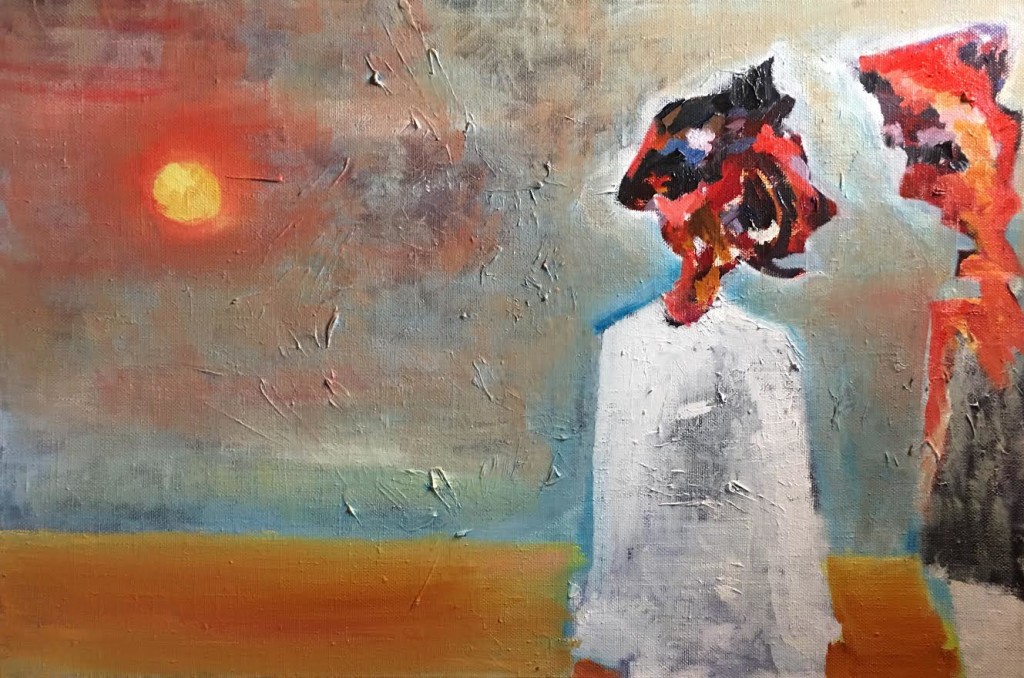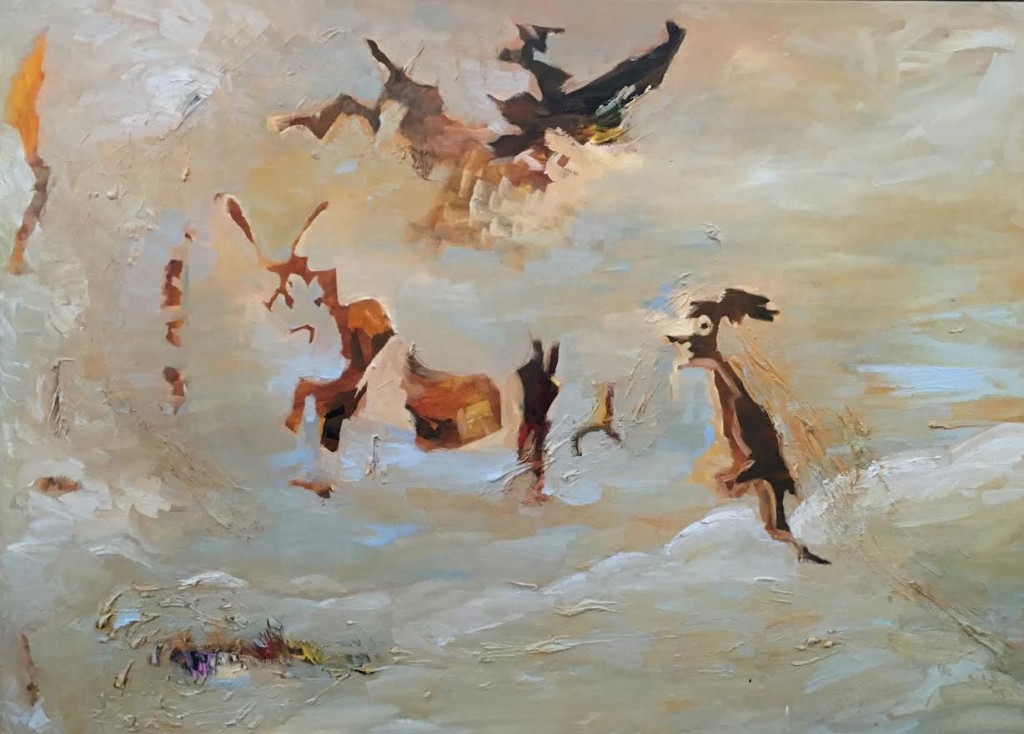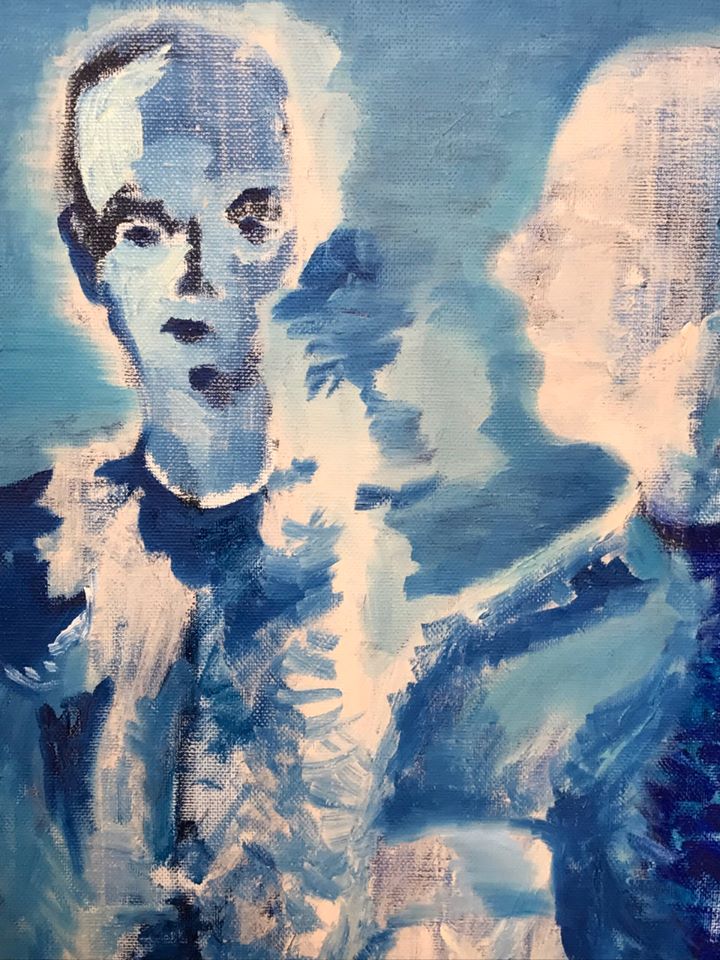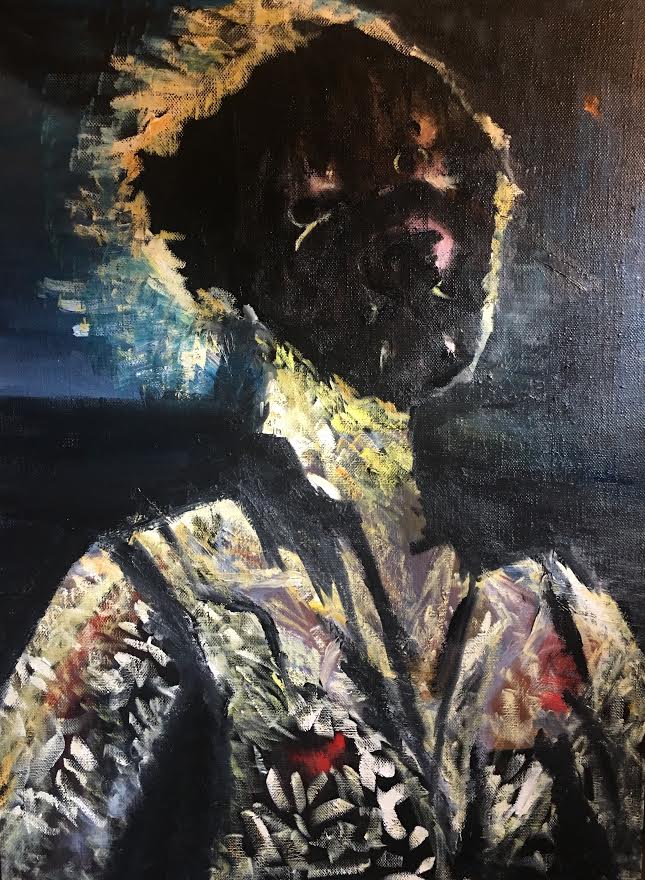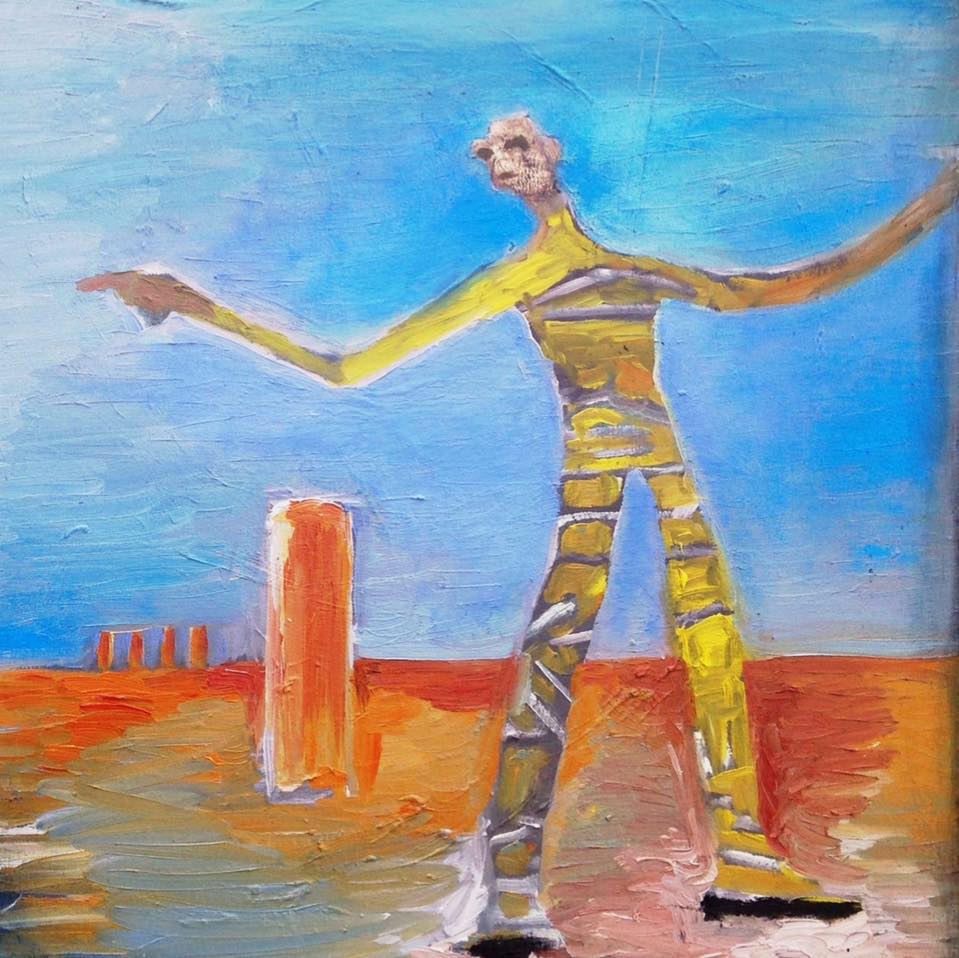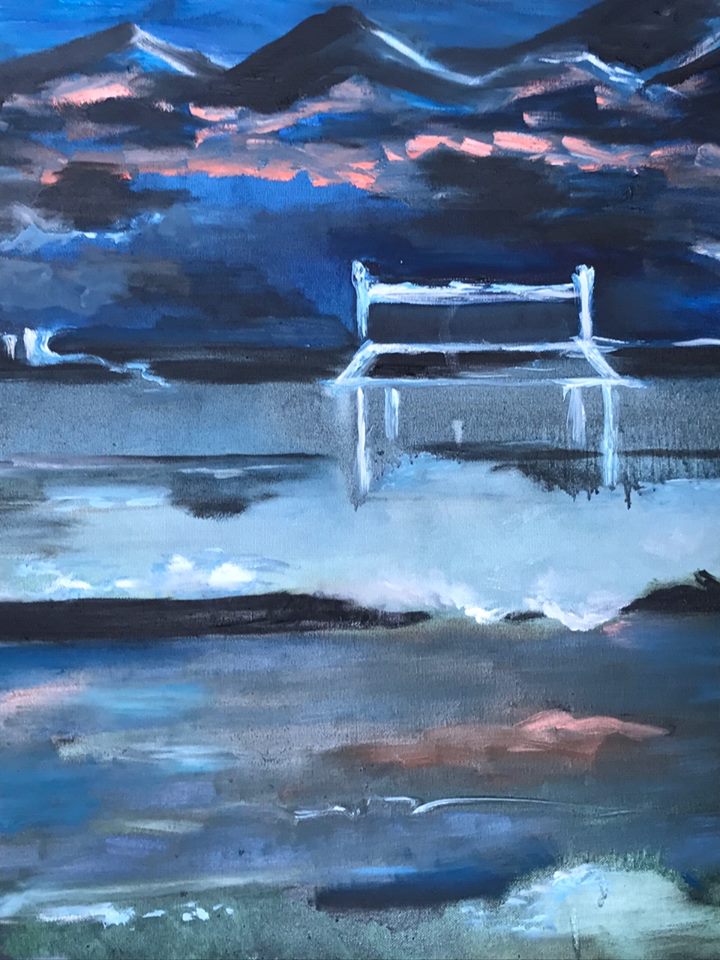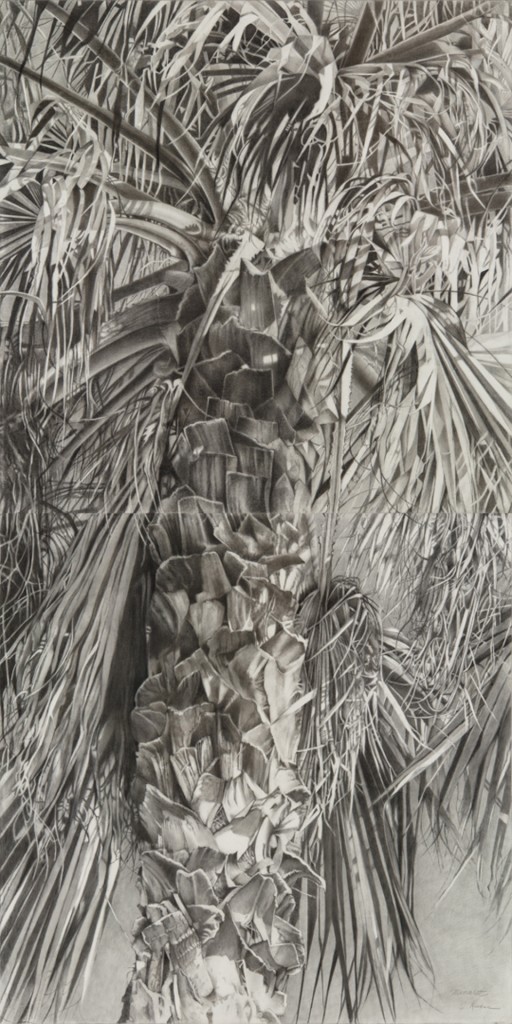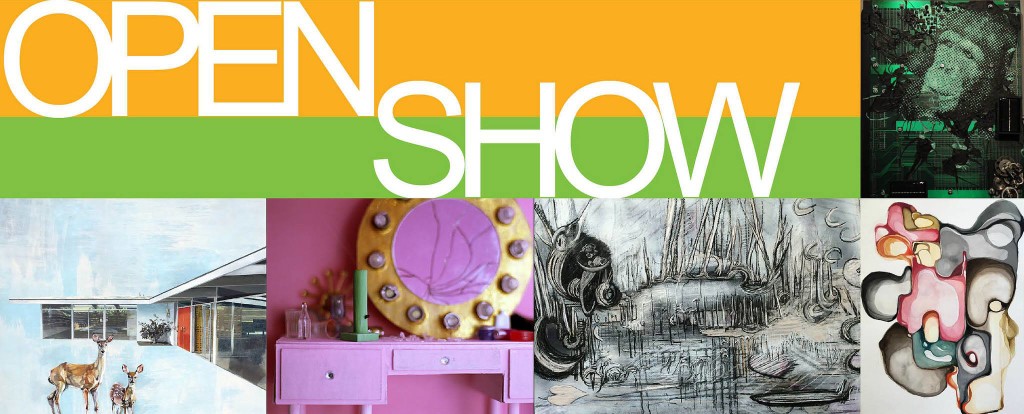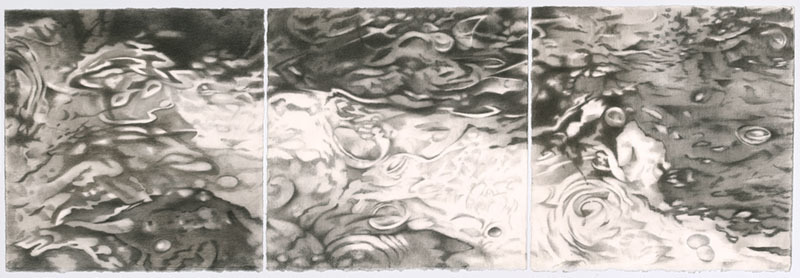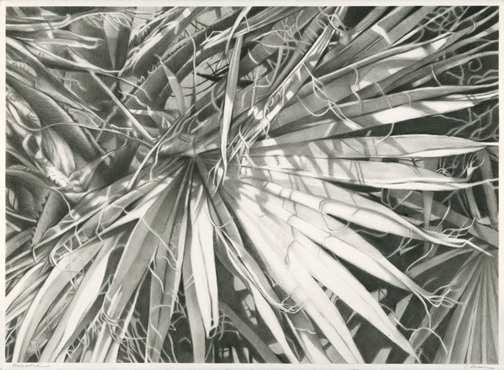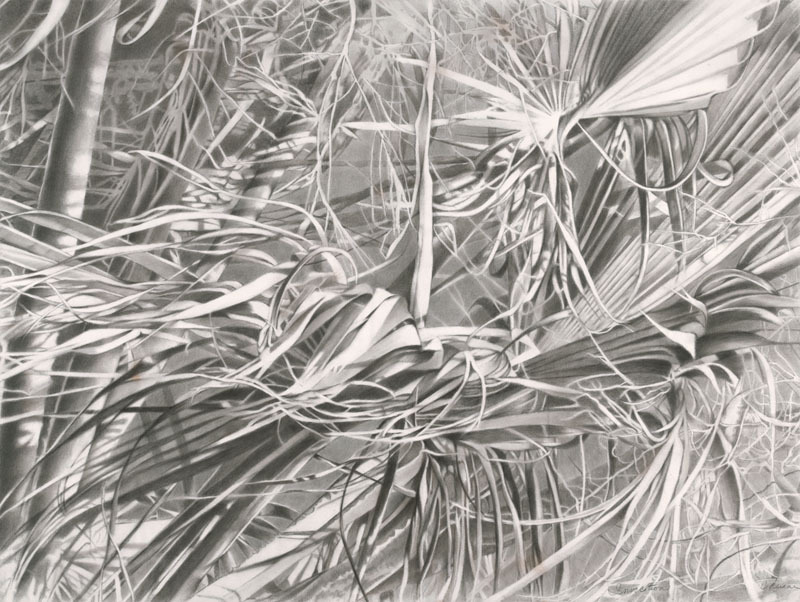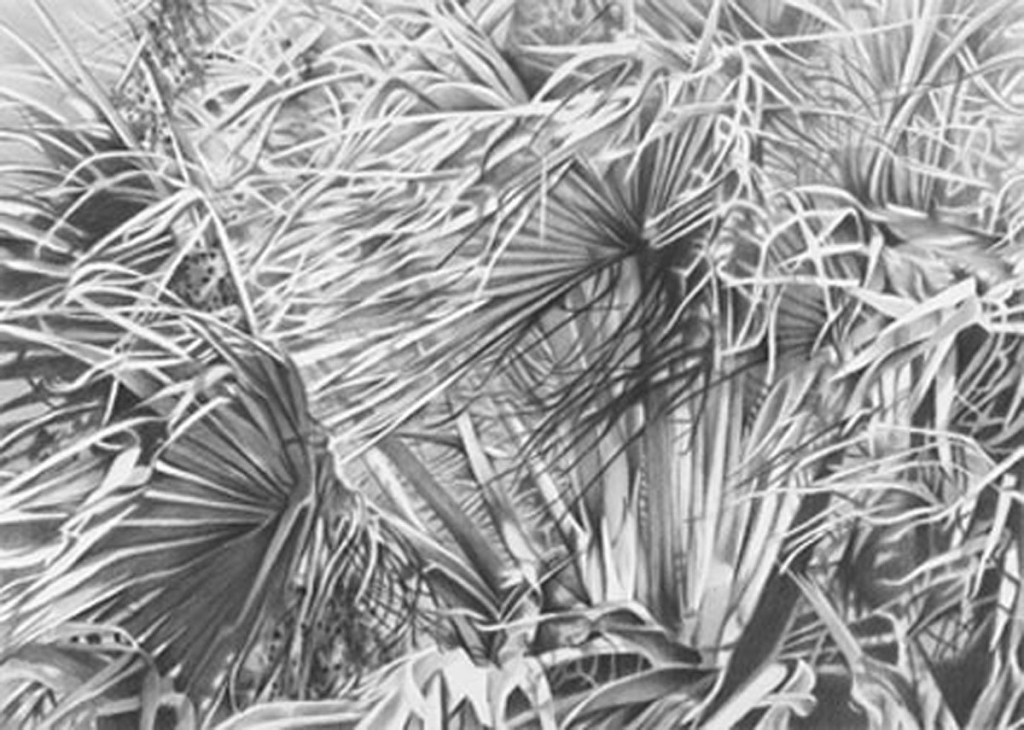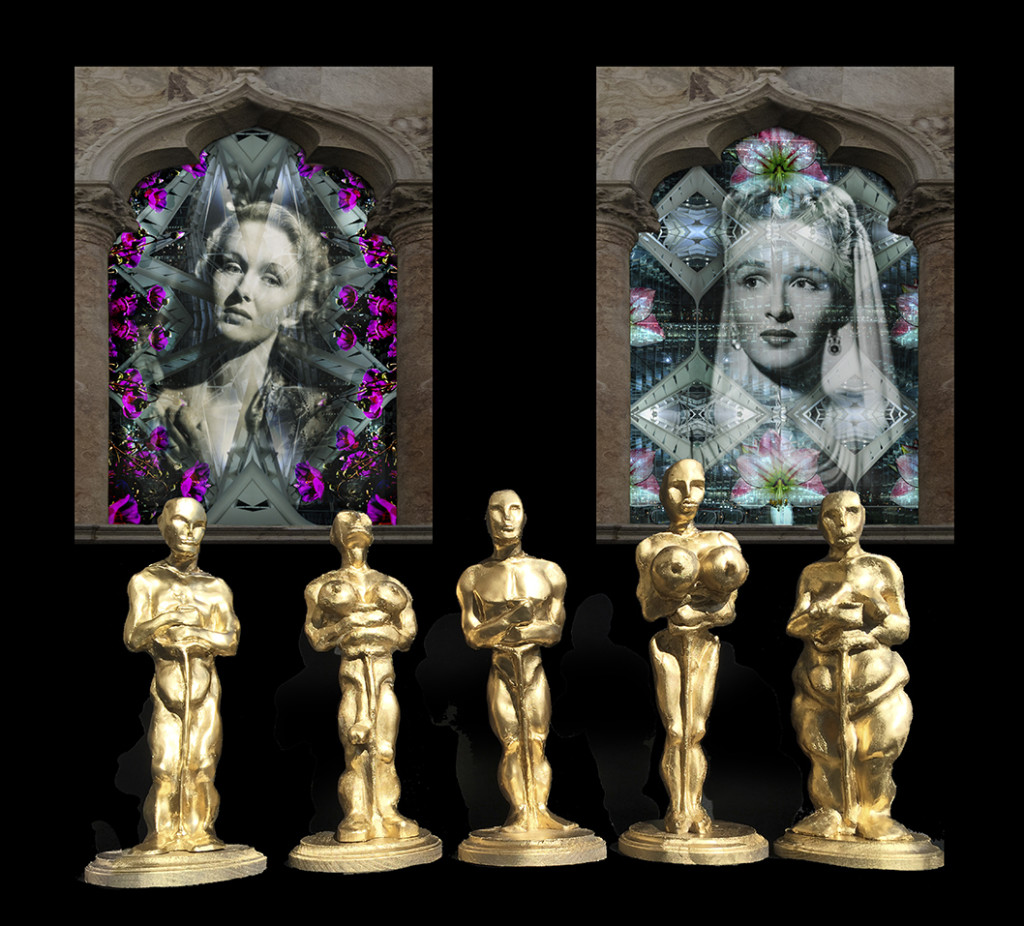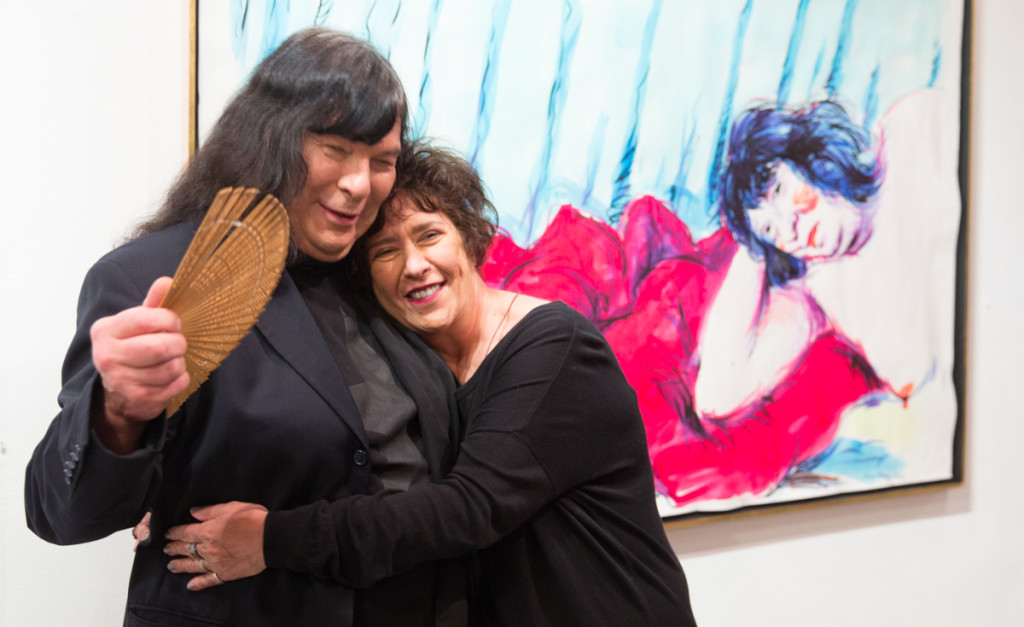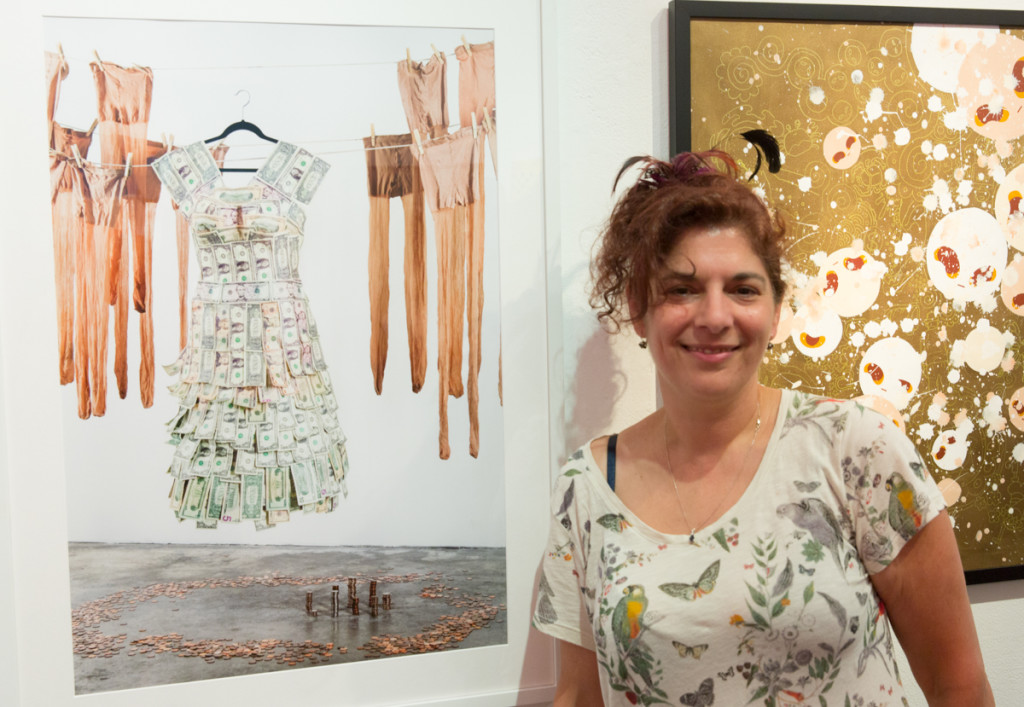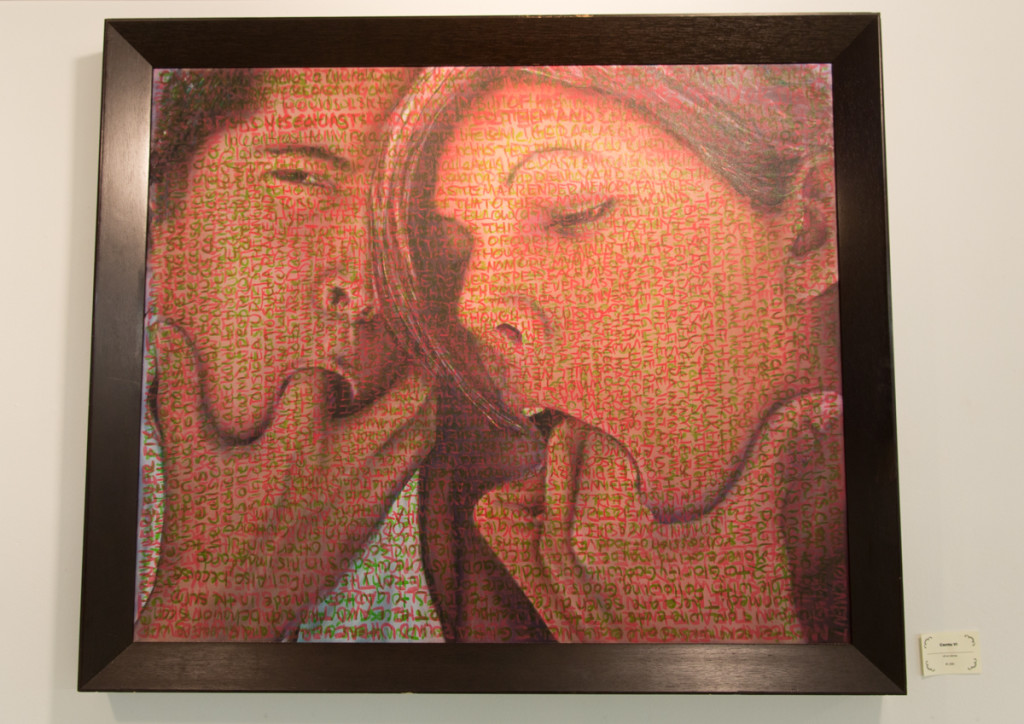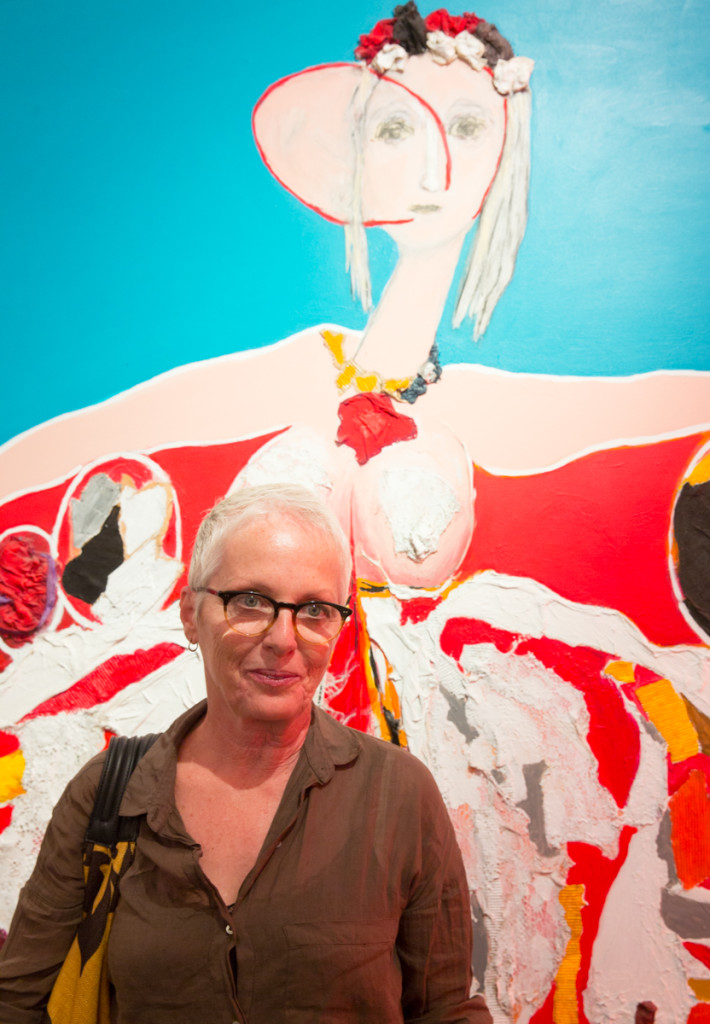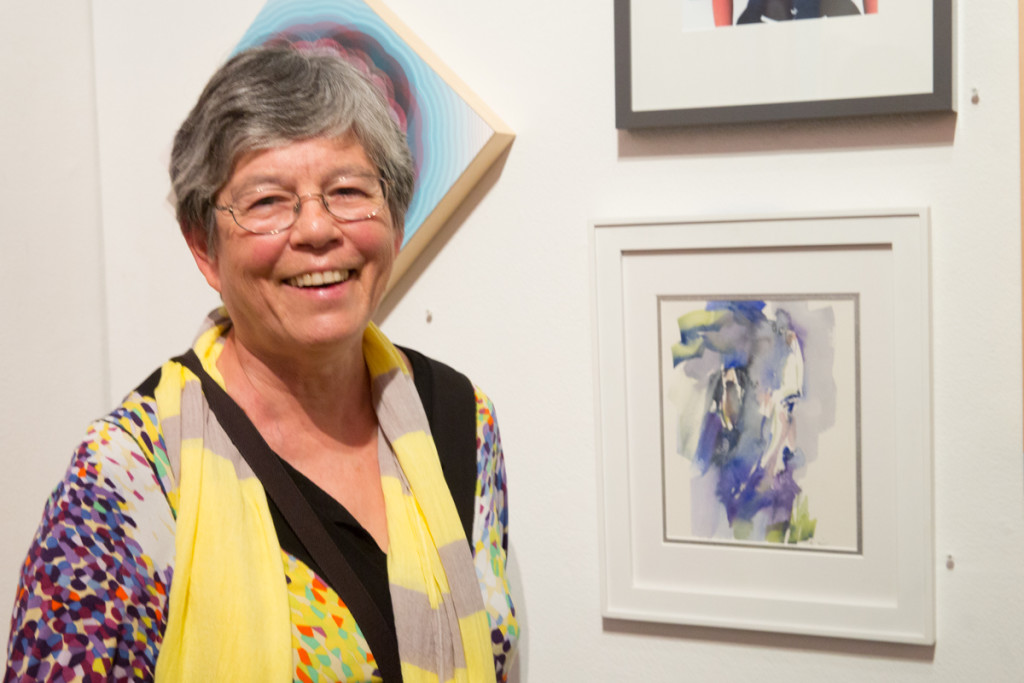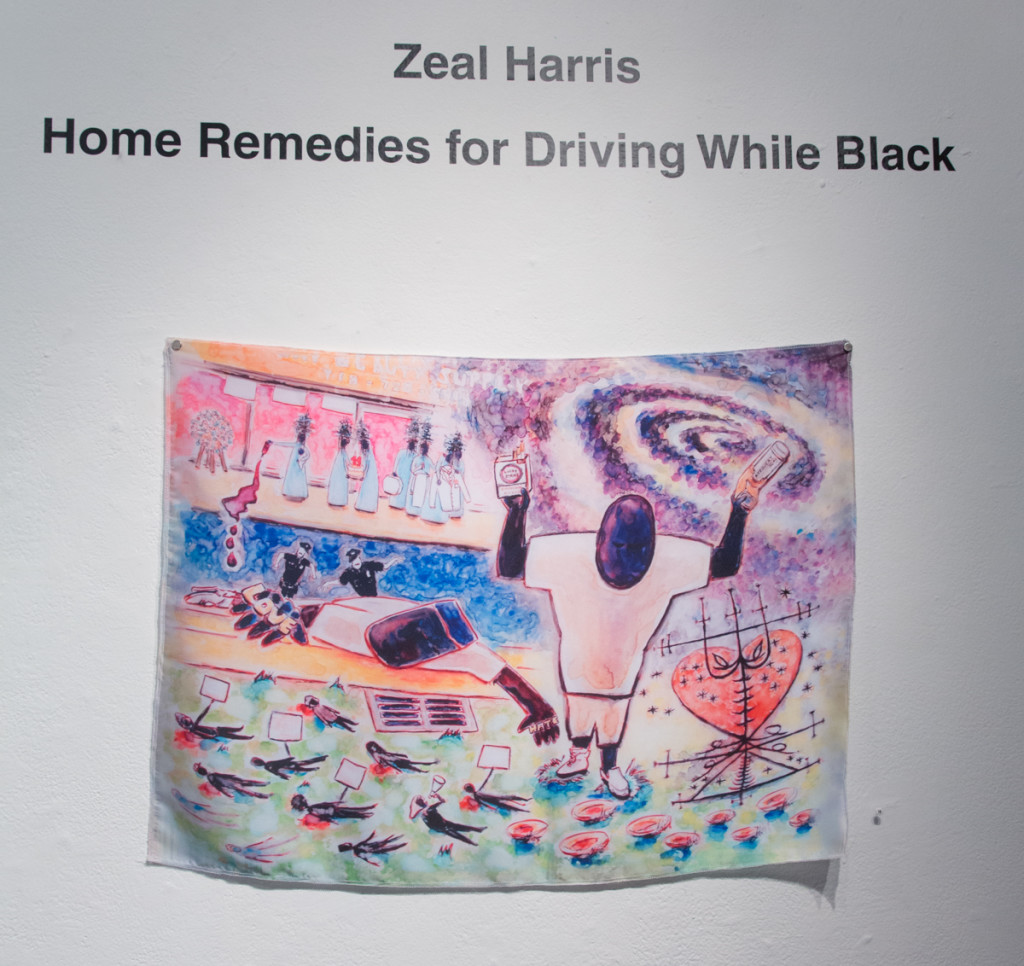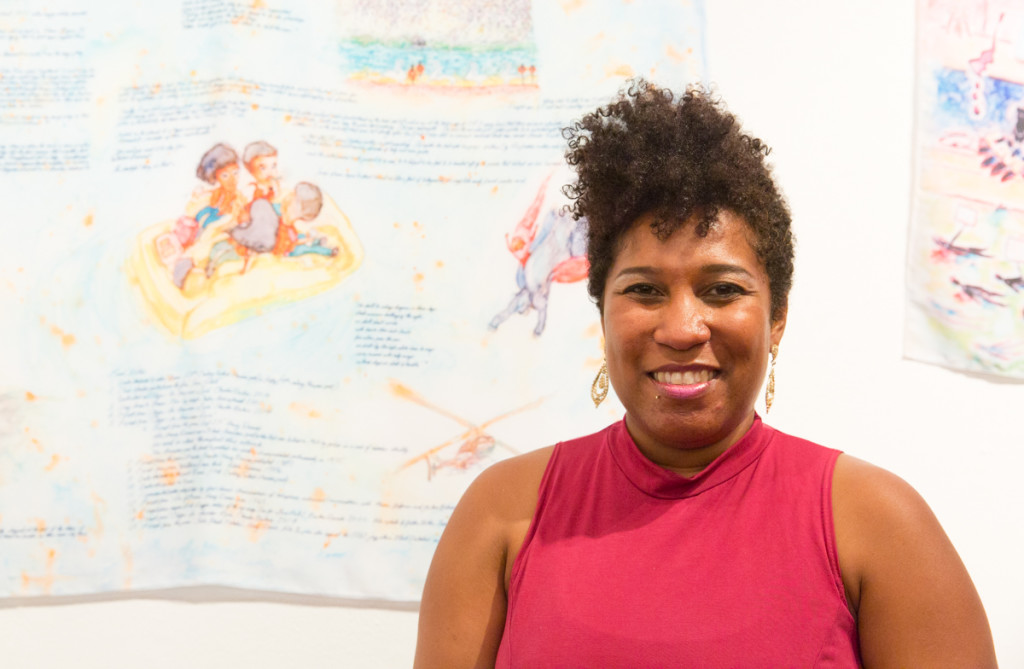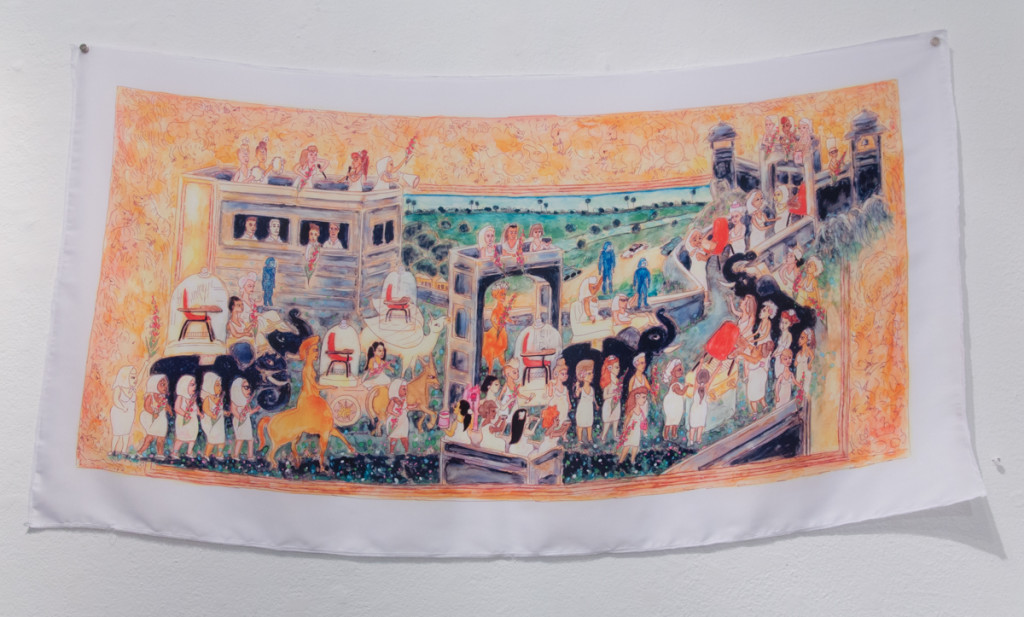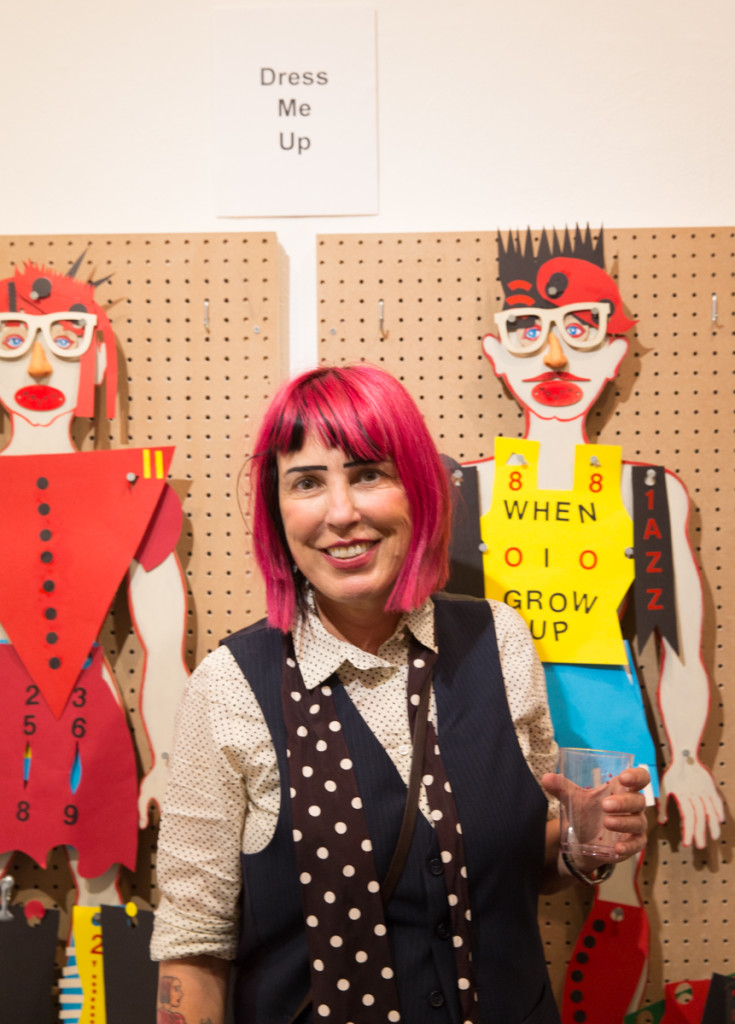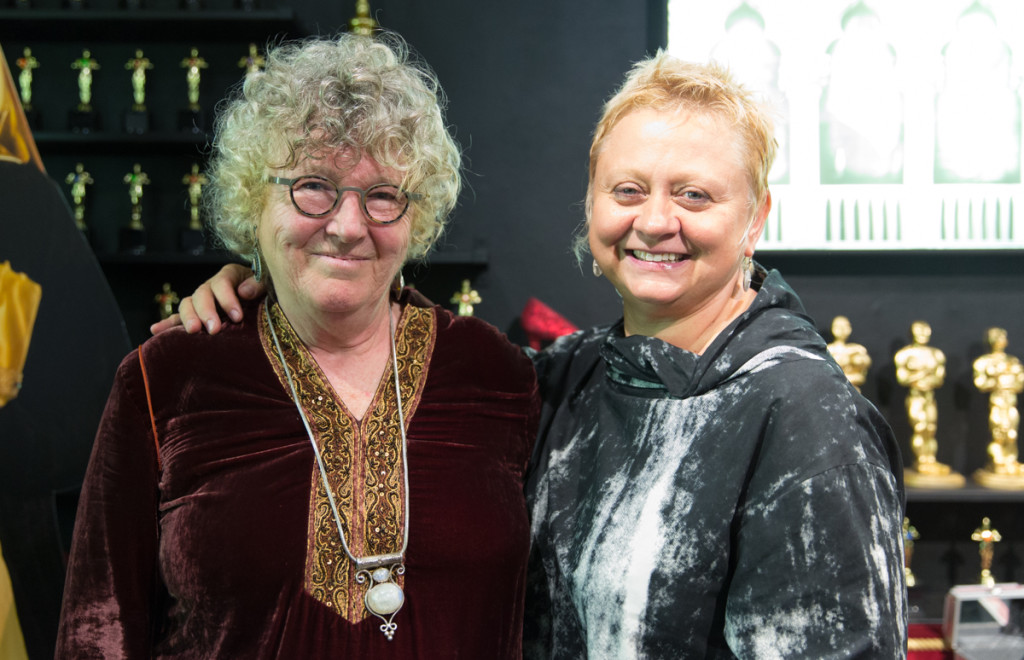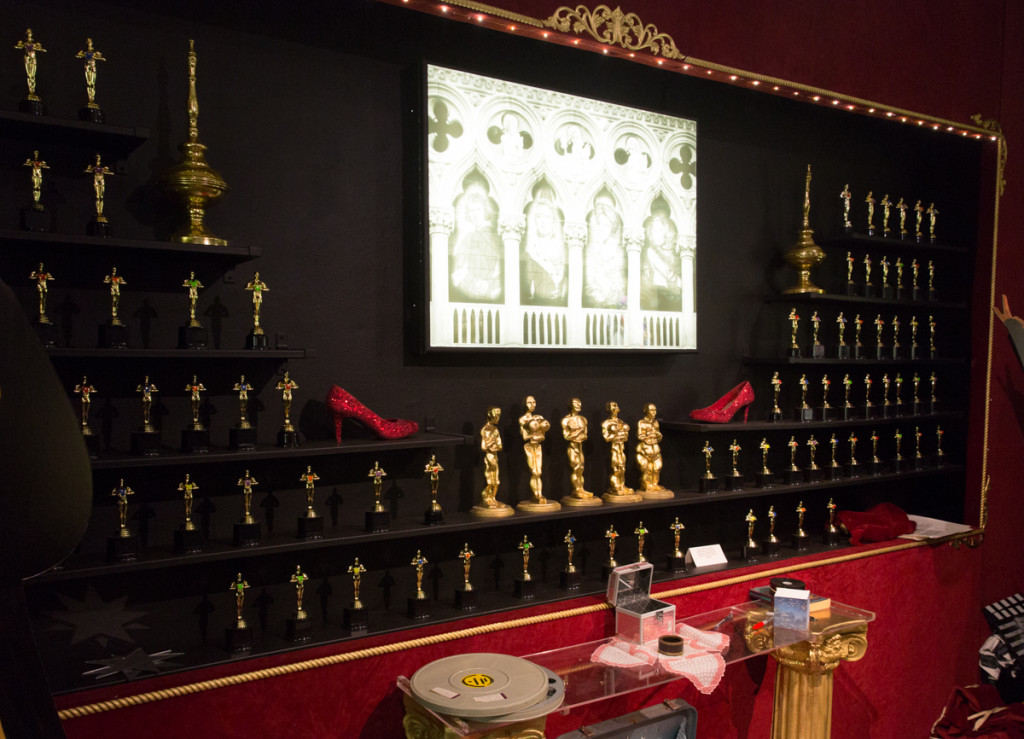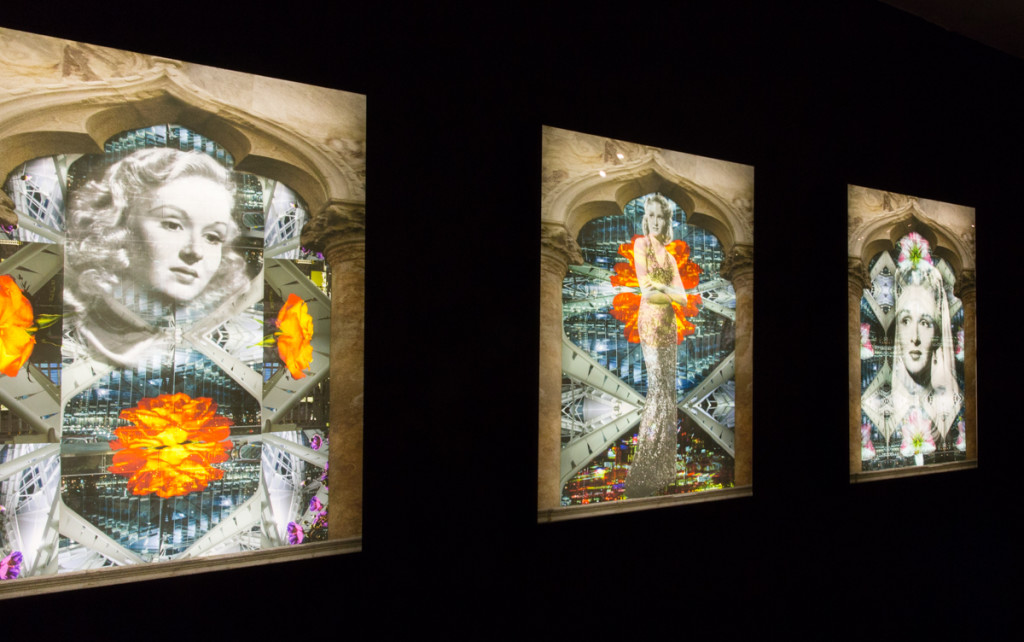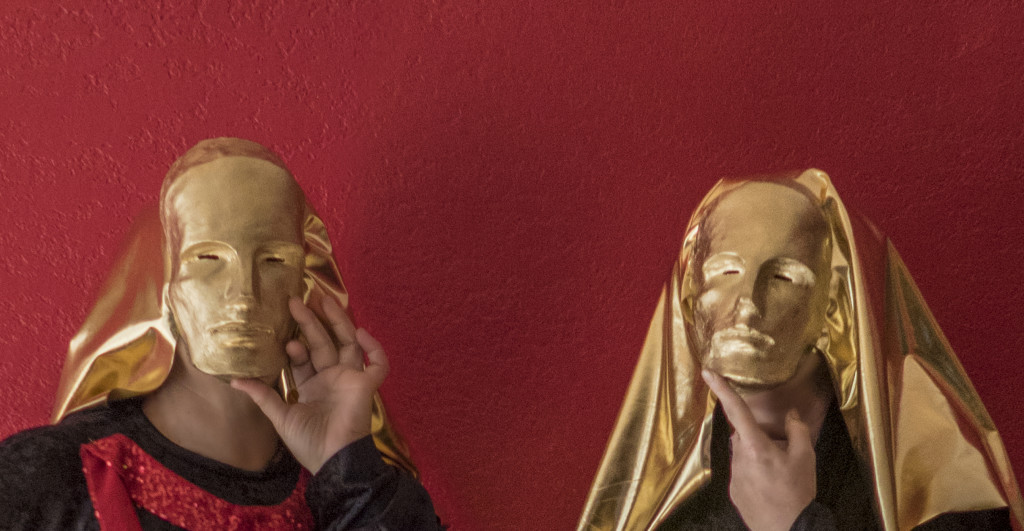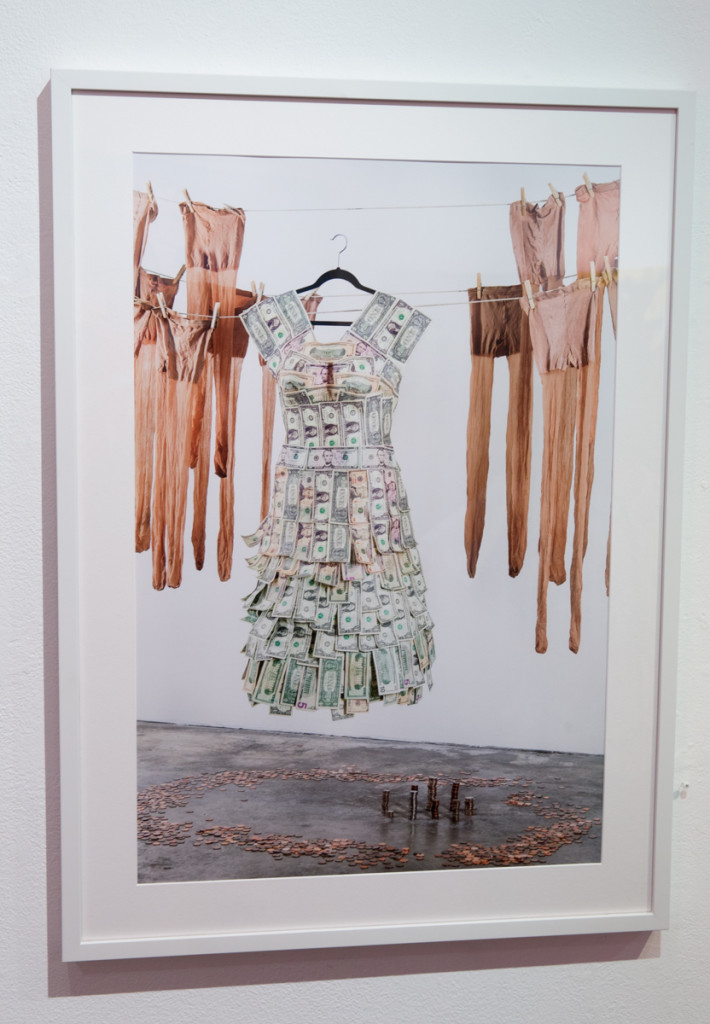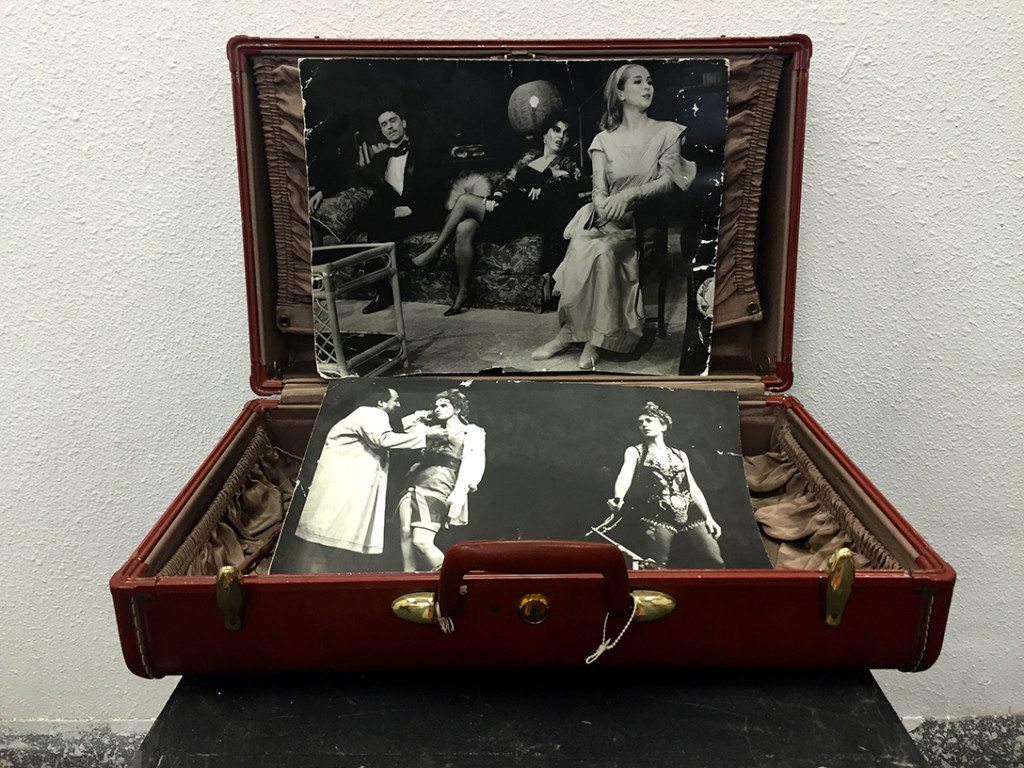He’s a mystic and poet – and a prolific artist who paints rich and complex stories every day.
Scott A. Trimble is a painter of profound depth and grace; each work is not only visually acute but resonates with meaning both opaque and transparent. His unique, figurative yet freeform expressionistic style, captures light and motion in layers of paint, shadowy faces, and otherworldly landscapes.
“What enables me to paint is that I found a way to not be concerned at all about what other people are going to think. I don’t engage my mind, I just try to use my eyes and enjoy myself- it’s a real simple process,” Trimble relates. “I don’t worry about something being particularly recognizable or anatomy being precise, I just enjoy what I’m doing.”
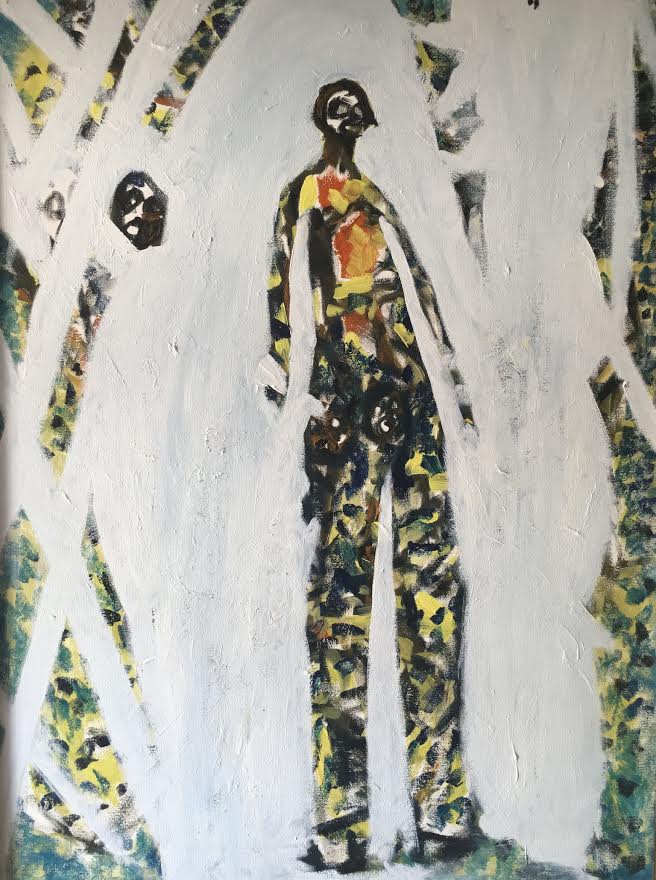
Indeed, there’s an almost wild joy in his work, a thrumming sense of emotion in each piece.
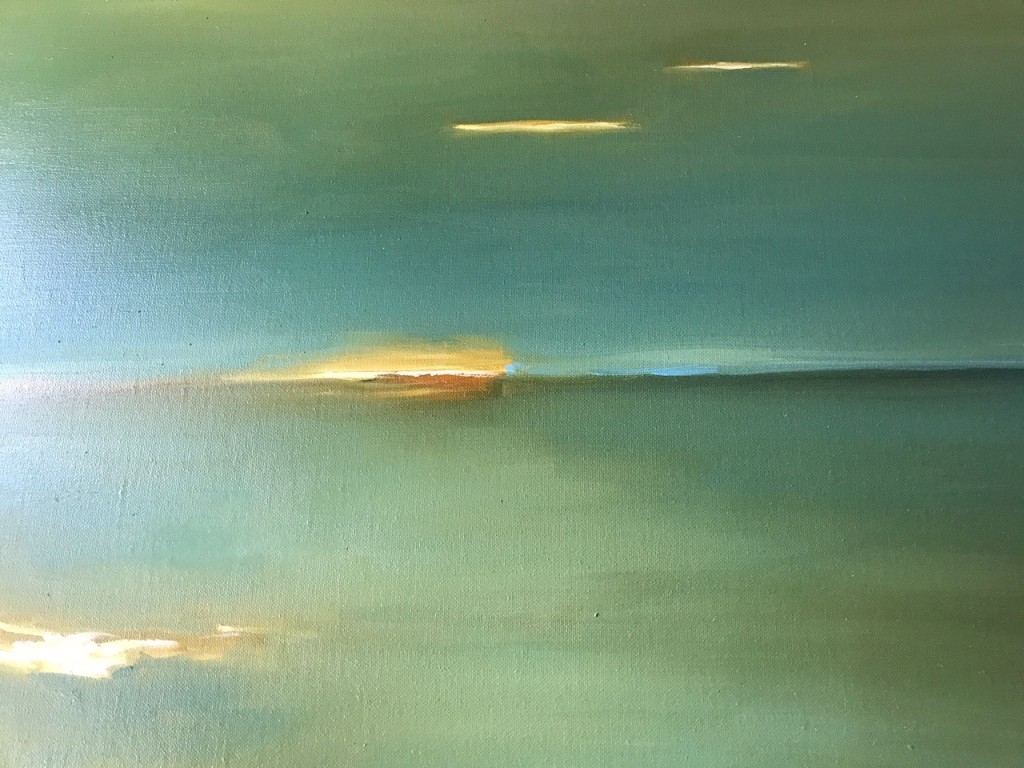
Each painting tells not just a story but a novella of emotion. One piece, “A Love of Place” was inspired as a reaction to what the artist calls a “disturbance in the essence of life’s fabric” by our current political landscape as well as by a strong love of place, according to the artist. Dealing with troubling politics and long days, Trimble painted aqua sky and sea – calm and divine. For Trimble, blue represents happiness.
“It was inspired by a time when my kids were young, and every weekend we would pick different environments in Los Angeles to explore – whatever popped up first in Google search, we would visit. What I learned and imparted to my boys, was that most people really loved where they lived no matter what we thought of the place. People who lived there, it was their home and they loved it. This is Los Angeles for me.”
The piece also features four small bars of light. “I use that constantly – four is a reference to me, my wife, and two kids – so they always know I’m thinking of them.”
He adds “In most of my paintings those groupings of four have three bars clustered together and one apart, observing or being observed.”
The observer – that’s Trimble indeed.
“I’ve spent my whole life thinking the single most important thing in life is your memory. My mom had several strokes a few years ago and her memory is gone. I’ve become interested in the way memory functions, the way it can be elusive, and memories mixed with other memories, and I wanted to replicate that process in the action of doing paintings that are physical manifestations of memory,” he explains, “and treat them with differing levels of preciousness, the way a really fond memory is nurtured and saved, where a less interesting memory is forgotten.”
With that elegiac thought in mind, Trimble has begun to paint over some works.
“I haven’t bought new canvas in five months,” he says. “Most of my paintings have been through the wash cycle more than once.”
Trimble notes that his very first paint-over was originally created in 1984, and painted over in 2014. “When my sons asked me why I had partially painted over something they had grown up with, I replied that it took me 30 years to finish it,” Trimble laughs. “It was an empowering thing to do to paint over it.”
Although Trimble has painted for decades, he took a hiatus when day job and family life consumed his time. “I had no time at all to paint, so I started again in 2013 when my son started college.”
He painted angry portraits of unlikeable people, abstracts, shadow figures, human figures, faces, and landscapes.
His voluminous output – art perhaps stored in his heart for years, follows an almost relentless process of nightly painting. “When I get home at 7:15, I come straight to my garage studio and work until 10:30 or midnight. I’m enjoying the moment, flashing through memories with paintings that are growing and changing.”
Older works exhibit thicker paint from paint-overs.
Many of his paintings have a dark and dreamlike quality, with images partly out of focus, due perhaps in part to working by a dim 60-watt bulb in a small space.
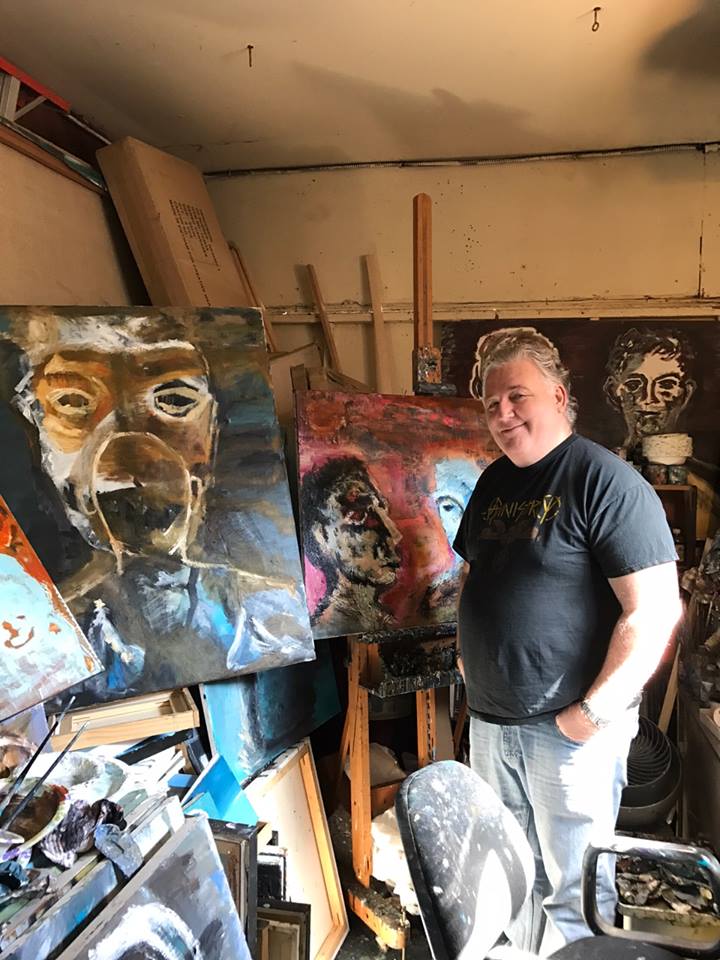 His titles reflect his past studying screenwriting – which is the wordsmith equivalent of visual poetry.
His titles reflect his past studying screenwriting – which is the wordsmith equivalent of visual poetry.
Take “I’m Pining for our Bench at Two Bunch Palms,” with a white bench, a reflection in a pond of skyline and desert mountains. The viewer immediately recognizes desert, but the intense blue is oceanic – it’s the visualization of the longing in the title, grand and inchoate.
“Ultimately in each of my paintings, I try to create pocket narratives, a short story comprised of a set of mixed up memories, emotions, and history, that are distilled down to a single sensation. It’s not something you can easily describe, but it’s meant to be felt.”
Feel what Trimble feels this month: the artist has 5 works that are a part of Satan’s Ball, the large group show currently at DTLA’s Art Share, and a collaborative piece at VS, a show which pairs artists together at Gallery 825 in West Hollywood. Sixteen other paintings are on exhibit in a stellar solo show at Laemmle’s NoHo Theater in North Hollywood. You can see more of the artist’s work at www.scottatrimble.com
- Genie Davis; Photos: Genie Davis and provided by artist



